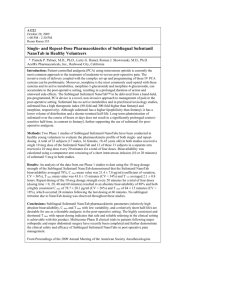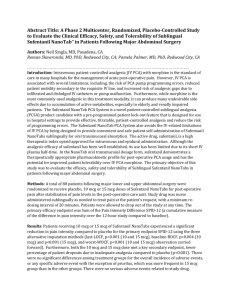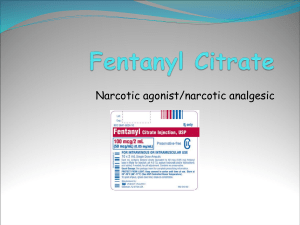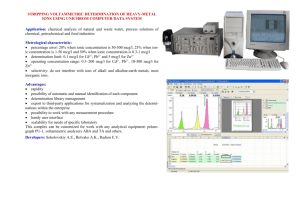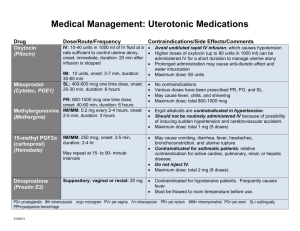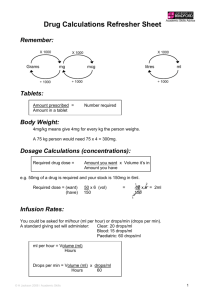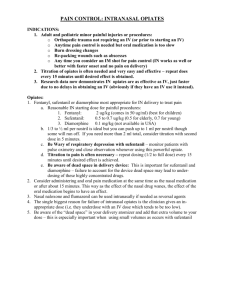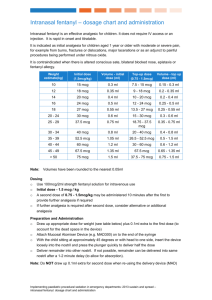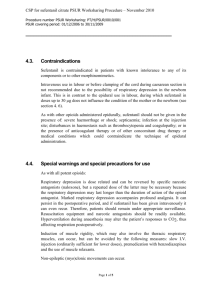102009_2 Abstract - AcelRx Pharmaceuticals, Inc
advertisement
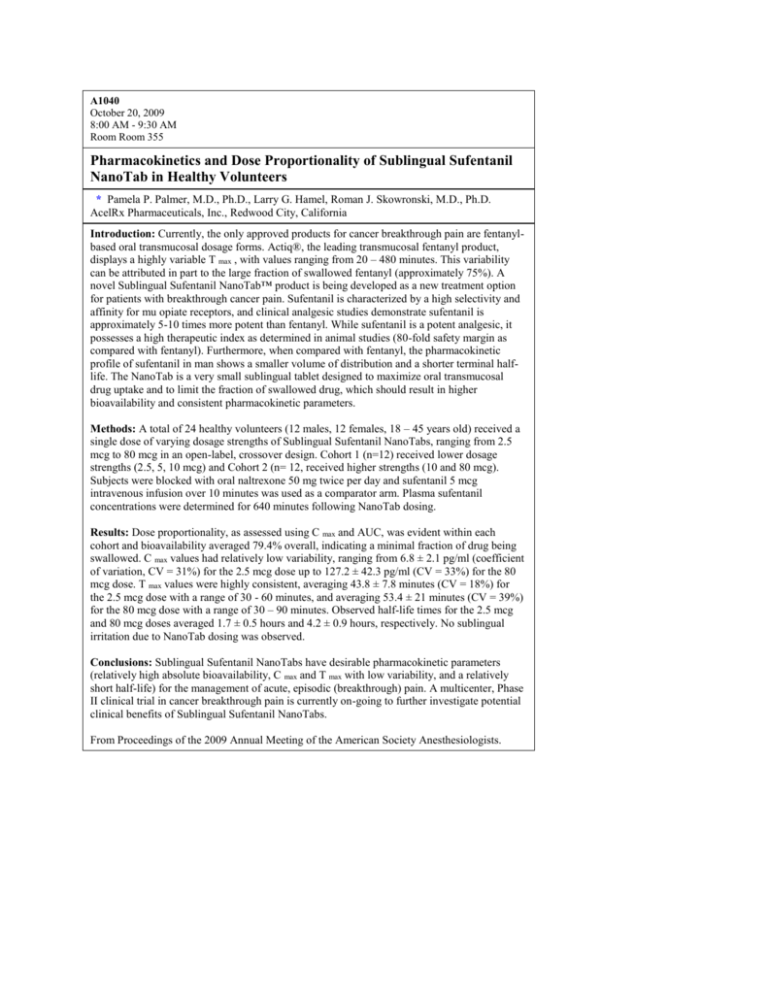
A1040 October 20, 2009 8:00 AM - 9:30 AM Room Room 355 Pharmacokinetics and Dose Proportionality of Sublingual Sufentanil NanoTab in Healthy Volunteers * Pamela P. Palmer, M.D., Ph.D., Larry G. Hamel, Roman J. Skowronski, M.D., Ph.D. AcelRx Pharmaceuticals, Inc., Redwood City, California Introduction: Currently, the only approved products for cancer breakthrough pain are fentanylbased oral transmucosal dosage forms. Actiq®, the leading transmucosal fentanyl product, displays a highly variable T max , with values ranging from 20 – 480 minutes. This variability can be attributed in part to the large fraction of swallowed fentanyl (approximately 75%). A novel Sublingual Sufentanil NanoTab™ product is being developed as a new treatment option for patients with breakthrough cancer pain. Sufentanil is characterized by a high selectivity and affinity for mu opiate receptors, and clinical analgesic studies demonstrate sufentanil is approximately 5-10 times more potent than fentanyl. While sufentanil is a potent analgesic, it possesses a high therapeutic index as determined in animal studies (80-fold safety margin as compared with fentanyl). Furthermore, when compared with fentanyl, the pharmacokinetic profile of sufentanil in man shows a smaller volume of distribution and a shorter terminal halflife. The NanoTab is a very small sublingual tablet designed to maximize oral transmucosal drug uptake and to limit the fraction of swallowed drug, which should result in higher bioavailability and consistent pharmacokinetic parameters. Methods: A total of 24 healthy volunteers (12 males, 12 females, 18 – 45 years old) received a single dose of varying dosage strengths of Sublingual Sufentanil NanoTabs, ranging from 2.5 mcg to 80 mcg in an open-label, crossover design. Cohort 1 (n=12) received lower dosage strengths (2.5, 5, 10 mcg) and Cohort 2 (n= 12, received higher strengths (10 and 80 mcg). Subjects were blocked with oral naltrexone 50 mg twice per day and sufentanil 5 mcg intravenous infusion over 10 minutes was used as a comparator arm. Plasma sufentanil concentrations were determined for 640 minutes following NanoTab dosing. Results: Dose proportionality, as assessed using C max and AUC, was evident within each cohort and bioavailability averaged 79.4% overall, indicating a minimal fraction of drug being swallowed. C max values had relatively low variability, ranging from 6.8 ± 2.1 pg/ml (coefficient of variation, CV = 31%) for the 2.5 mcg dose up to 127.2 ± 42.3 pg/ml (CV = 33%) for the 80 mcg dose. T max values were highly consistent, averaging 43.8 ± 7.8 minutes (CV = 18%) for the 2.5 mcg dose with a range of 30 - 60 minutes, and averaging 53.4 ± 21 minutes (CV = 39%) for the 80 mcg dose with a range of 30 – 90 minutes. Observed half-life times for the 2.5 mcg and 80 mcg doses averaged 1.7 ± 0.5 hours and 4.2 ± 0.9 hours, respectively. No sublingual irritation due to NanoTab dosing was observed. Conclusions: Sublingual Sufentanil NanoTabs have desirable pharmacokinetic parameters (relatively high absolute bioavailability, C max and T max with low variability, and a relatively short half-life) for the management of acute, episodic (breakthrough) pain. A multicenter, Phase II clinical trial in cancer breakthrough pain is currently on-going to further investigate potential clinical benefits of Sublingual Sufentanil NanoTabs. From Proceedings of the 2009 Annual Meeting of the American Society Anesthesiologists.
